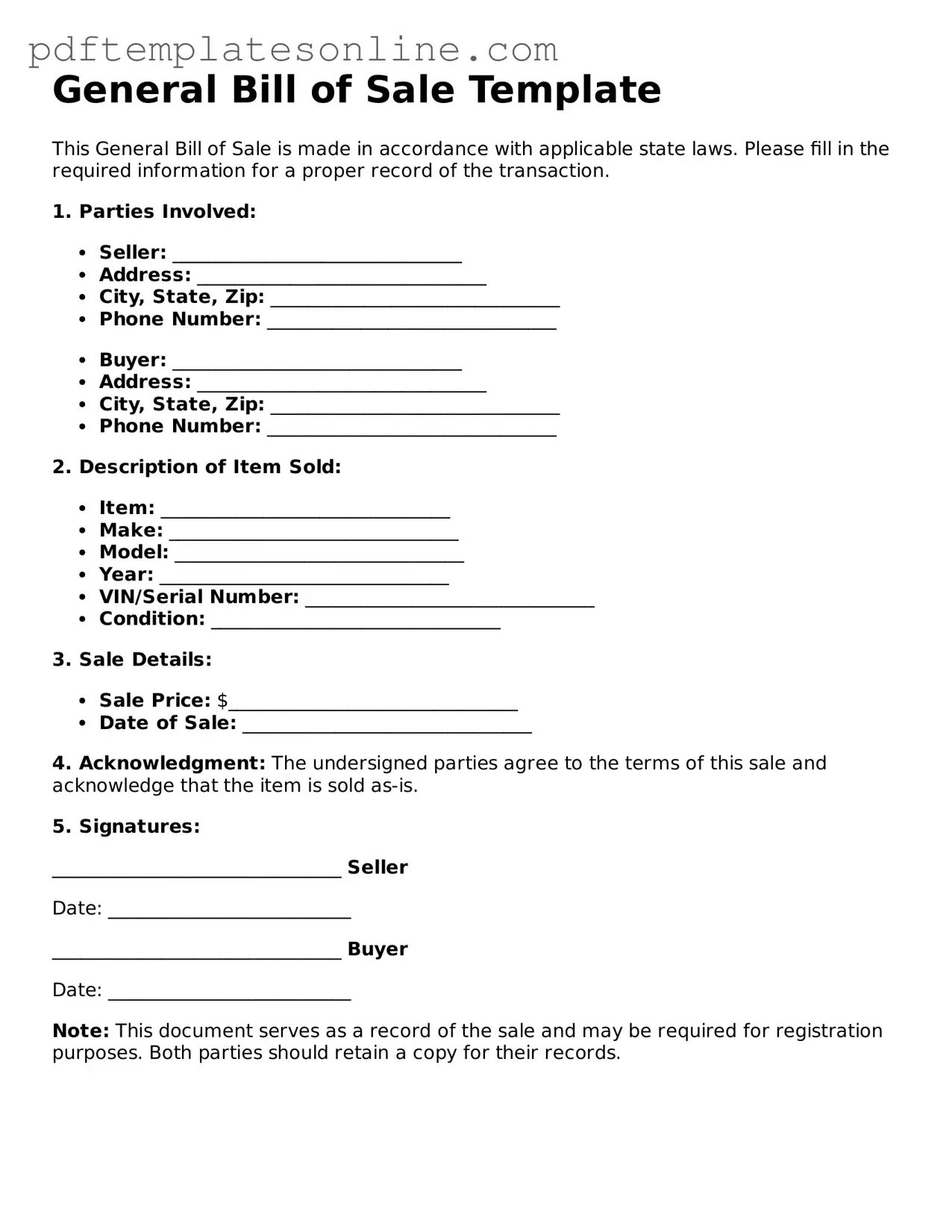When completing a General Bill of Sale form, individuals often overlook important details that can lead to complications. One common mistake is failing to provide accurate information about the buyer and seller. Each party's full name, address, and contact information should be clearly stated. Missing or incorrect details can create confusion and potential disputes later on.
Another frequent error is neglecting to describe the item being sold in sufficient detail. A vague description can lead to misunderstandings about the condition and specifications of the item. It's essential to include information such as the make, model, year, and any identifying numbers, like a Vehicle Identification Number (VIN) for vehicles. This clarity helps both parties understand exactly what is being transferred.
Some individuals forget to include the sale price. This is a crucial element of the General Bill of Sale, as it establishes the financial terms of the transaction. Without a stated price, it may be challenging to prove the value of the item for tax purposes or in the event of a dispute.
Additionally, people often overlook the importance of signatures. Both the buyer and seller must sign the document for it to be legally binding. Failing to obtain signatures can invalidate the sale, leaving both parties without legal recourse if issues arise later.
Another mistake involves not keeping a copy of the completed Bill of Sale. After the form is filled out and signed, it is vital for both parties to retain a copy for their records. This document serves as proof of the transaction and can be necessary for future reference, especially if questions about ownership or condition arise.
Finally, individuals sometimes forget to check local laws regarding the Bill of Sale. Requirements can vary by state or municipality, and some areas may have specific rules about what must be included or how the document should be formatted. Ignoring these regulations can lead to issues with the validity of the sale.
